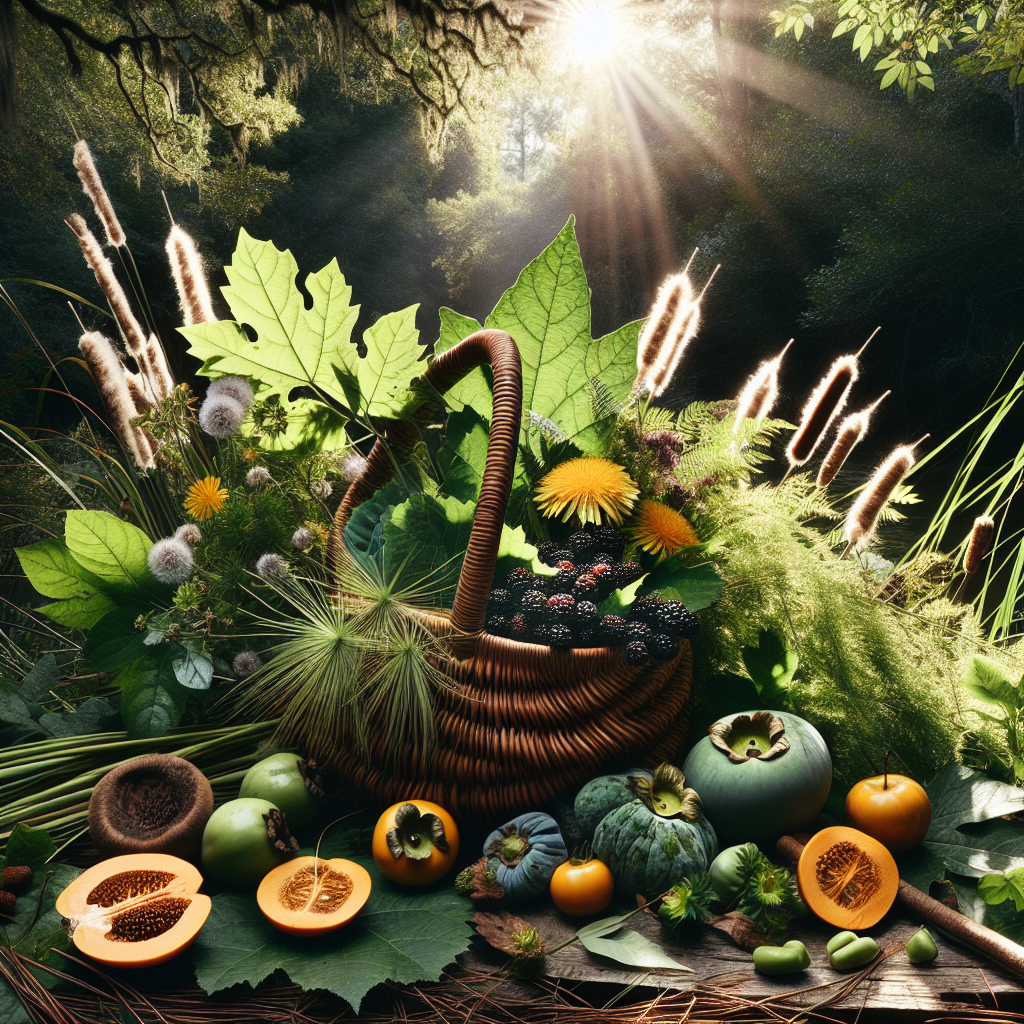Introduction to Foraging in the Southeast
Living in the Southeastern US offers a unique bounty for those keen on foraging. From the humid swamps of Florida to the lush forests of North Carolina, nature provides a pantry if you know where to look. Today, I’m sharing my top picks for edible plants in the Southeastern US that not only are safe to eat but also add a bit of wild flavor to your kitchen.
Dandelion (Taraxacum officinale)
Often dismissed as just a weed, the humble dandelion is a powerhouse of nutrition. Every part of this plant is edible. The leaves make a great salad, the roots can be roasted for a coffee substitute, and the flowers can be turned into a delicious jelly. Spring is the best time to harvest when the leaves are tender and less bitter.
Wild Blackberries (Rubus spp.)
Scattered across the Southeast, wild blackberries are a sweet summer treat. They’re not only delicious but are packed with antioxidants, vitamins, and minerals. Look for them in sunny areas with good drainage, or along the edges of fields and forests. Be sure to harvest before the birds do!
Chickweed (Stellaria media)
A common sight in cooler months, chickweed is mild and slightly peppery. Use it fresh in salads or sandwiches or cooked down like spinach. It’s a great source of vitamins A, D, and C, iron, calcium, and potassium. Chickweed grows in a carpet-like mat, which makes it easy to collect in quantity.
Lambsquarters (Chenopodium album)
Lambsquarters, or wild spinach, is found in disturbed soils such as fields and garden beds. Its leaves are excellent steamed or sautéed, high in protein, calcium, and B vitamins. Just make sure to harvest before it flowers for the best flavor and digestibility.
Wild Garlic (Allium vineale)
Found in shady, moist areas, wild garlic has a milder taste compared to its cultivated cousin but is just as versatile. Use the bulbs and leaves in any recipe calling for garlic to add a punch of flavor as well as a boost of vitamin C and selenium.
Conclusion and Safety Tips
Foraging for edible plants in the Southeastern US can be a rewarding experience, but safety first! Always be sure to positively identify any plant before consuming and be aware of any potential allergies. Avoid foraging near roads or in areas that might be contaminated by pesticides or herbicides.
If you’re interested in how plant-based diets impact health beyond just foraging, consider reading Plant-Based Diets and Hormone Balance Explained for deeper insights.


